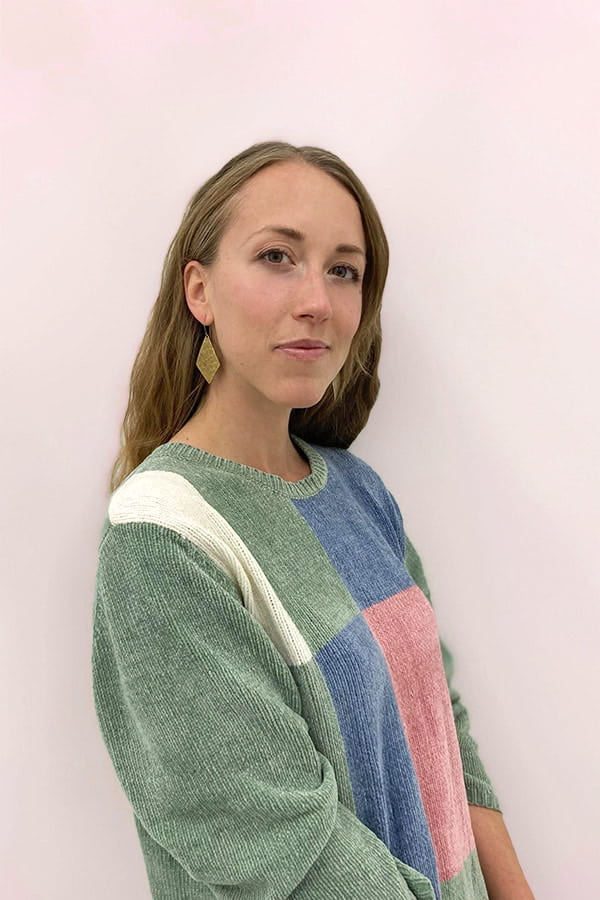Artist Statement
Origin Story represents the first stage of a cave-like installation composed of doilies and domestic objects, inverted and repurposed from their traditional roles to encourage a reconciliation of dichotomies, including that which we consider to be (genderless) masculine and feminine. Upon first impression, viewers’ eyes are focused within a dark room to the glowing, dripping, multicolor form which drapes from above. They are then led by the pointed tips of the nearly fluorescent fabric cones to the quiet forms below. Neutral toned glass, metal and ceramic are subtly distinguished in the dimly lit vertical stacks arising up from the floor, though one may have already suspected they have ties to the colorful cloud above. At closer encounter with the illuminated ceiling, web-like crocheted doilies, reminiscent of communal, feminine history and innovation, are hand-stitched into the form of stalactites, connected and suspended in a unexpectedly phallic way. Beneath the titillating tips are stalagmites of inverted and stacked functional domestic-ware, more fragile the taller and narrower they stand. The individual dish-wares vary from simple, angular, decorative, round, translucent and opaque. Presented collectively, the forms takes on a more intriguing, feminine expression. While walking through the piece, viewers can see that while the ceiling and floor forms are made of elementally different materials, both echo each other, implying an unspoken connection. As above, so below. Gravity and a further awareness on the formation of caves helps guide the narrative, telling of which came first, in this case the communal web of creative feminine. The source of light shining from within the crocheted ceiling casts shadows and reflections, which gleam off the shiny hard shrines below, prompting a reconsideration of what is illusion and truth. As within, so without. Looking closely at the metal bowls, one might even notice the intricacies of the original form above. Could one exist without the other?





